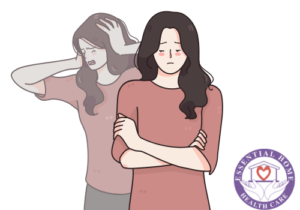Throughout the day, we process information from our senses. Whether it’s the din and commotion of our commute to work on the tube or the taste and scent of the food we eat. We’re all familiar with the five senses of sight, smell, touch, hearing, and taste, but did you know there are two more?
- Proprioception is the sense of being aware of one’s surroundings (body awareness)
- There are sensors in our joints and muscles that notify our brain where our limbs are in space.

Vestibular System (movement)
Vestibular receptors in the inner ear convey information about the body’s movement to the brain. Most children process sensory input from their environment quickly enough to respond normally. A child’s capacity to carry out day-to-day activities can be harmed if this knowledge is not processed or ‘integrated’ correctly.
If a youngster has trouble processing sensory information from the environment, it can affect their behaviour in a variety of ways. They are less likely to reach their full academic potential, struggle with social relationships, and find family pleasures like swimming, vacations, and going to the movies unpleasant. What is occupational therapy for sensory processing disorder?
The following are some examples of how Sensory Processing Disorder can manifest in your child:
Difficulties With Touch (touch)
These can manifest as an aversion to sticky or filthy hands, a dislike for wearing shoes or socks, itchy clothing, a desire to touch specific surfaces and textiles, a dislike for having their hair washed or brushed, or a dislike for textured food, resulting in a fussy or picky eater.
Difficulties With Proprioception (where they are in space)
This could manifest as a child seeking out heavy stuff to snuggle under, such as heavy garments or coats. They may appear fidgety in class and move around a lot to receive feedback. If searching for OT therapy then must look for ot therapy near me. Essential home health provides exceptional care.
Vestibular Dysfunction (movement)
They may be afraid of heights or avoid movement like spinning or swinging, or they may be the polar opposite and seek these experiences and indulge in these activities whenever possible.
Difficulty With Hearing (hearing)
This can include an excessive sensitivity to loud noises, such as those heard at a playground or a swimming pool. Children who are underresponsive to auditory stimuli may appear to be uninterested in their surroundings, such as failing to notice when their name is called aloud.
What Role May An Occupational Therapist Have In The Treatment of Sensory Processing Disorder
An occupational therapist can assist in determining how a kid processes and responds to sensory input. Once the areas of difficulty have been identified, strategies and procedures to overcome them are deployed. Occupational therapy aims to promote proper sensory responses in an active, engaging, and enjoyable manner. The therapist leads the kid through entertaining tasks that are discreetly arranged so that the youngster is continually pushed but always successful throughout occupational therapy sessions.
Treatment for any problem should never be done once a week; to be genuinely effective, it should be done 24 hours a day, seven days a week, including school, home, and therapy sessions. Our occupational therapist, who specializes in sensory integration, will come to your home and discuss your child’s sensory difficulties as well as give you skills and strategies to address them. This is referred to as a sensory diet.’ We’ll also offer suggestions to teachers who work with your child on a regular basis.
Is There Any More Clinical Information Available About Sensory Processing Disorder
What exactly is brushing?
This can be a useful tool for children who have difficulty with touches, such as those who find wearing clothes unpleasant and uncomfortable, or who dislike wearing shoes and socks. Our occupational therapist will show you how to clean your child’s teeth using a soft-bristled brush applied in a specific method to generate deep pressure, followed by joint compressions, several times each day.
What is a sensory diet, and how does it work?
Your child’s occupational therapist may only meet him or her once or twice a week. A sensory integration method should be used throughout the day, including at home and at school. Occupational therapists frequently provide sensory diets,’ in which they develop a precise regimen of therapies tailored to your child’s sensory needs.
What is the best equipment for a child with a sensory processing disorder?
Creating quiet places and decreasing visual clutter are common suggestions for making the house or classroom more sensory smart.’ Parents may also choose to purchase weighted vests or blankets, pressure garments, fidget toys, or even chewable jewelry, which our occupational therapist will discuss with you.
What We Can Do To Assist
We want to find a solution to the problems that come with Sensory Processing Disorder. The following are some of the most prevalent ones we see.
- Take a look at the obstacles that come with it.
- Businesses, nonprofits, and the public sector
- Learn how we may customize our strategy and services for your company or organization.
- Case managers for children
- Local authorities in charge of education
- Schools
- Concierges in the medical field
- Clients from around the world
- Guardians and parents
Essential Home Health Care Chicago is the best in providing occupational therapy. For more information, you can call us at (847) 813 6301. Read occupational therapy levels of assistance? We also provide occupational therapy for sensory processing disorders.
